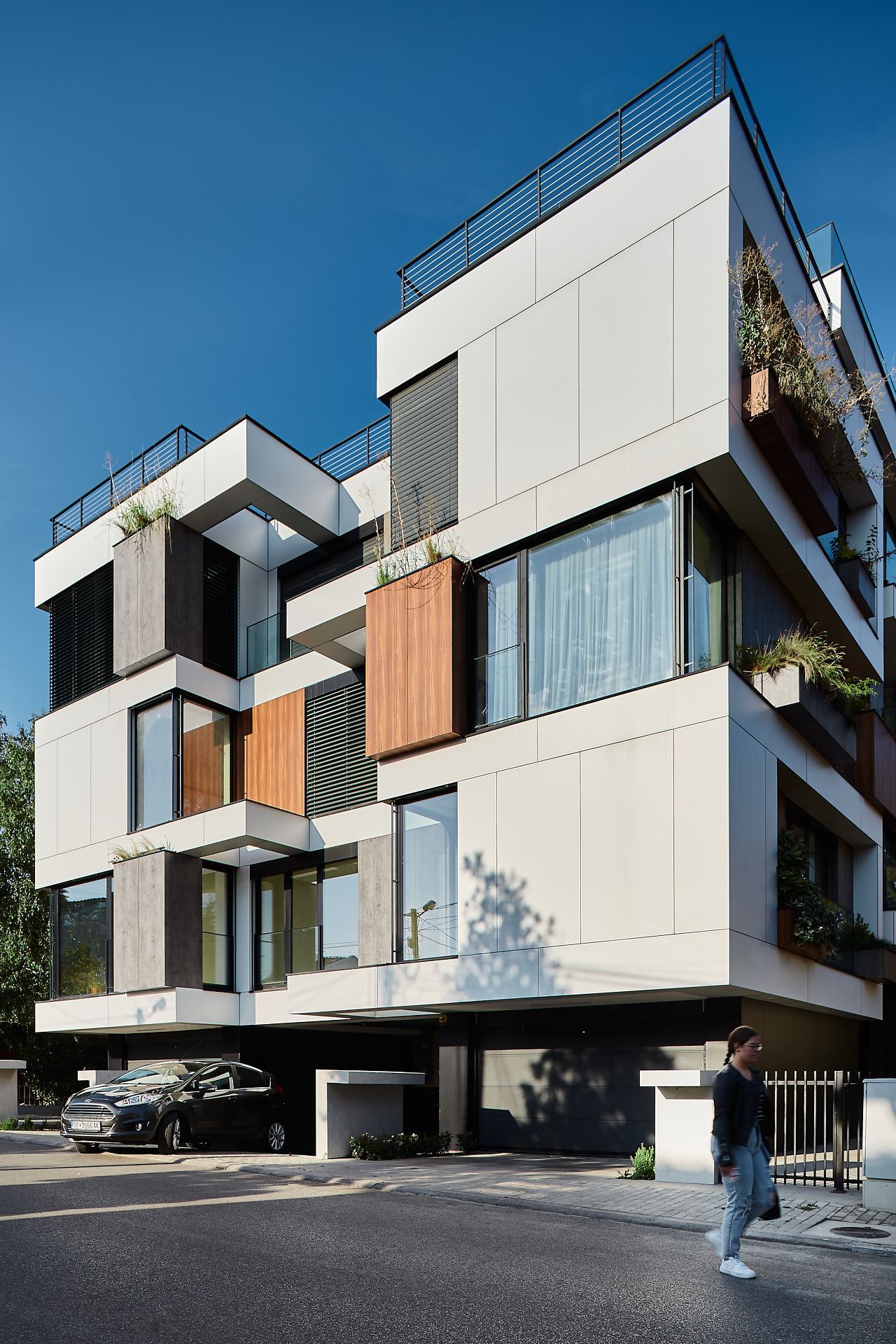The newly built building aims to fit into the context in which it is located, but with a new contemporary approach to architecture that is the result of experimentation with forms and materials as well as functional organization and arrangement of residential units on several interlevels and interwoven floors. The whole concept of the solution is aimed at each residential unit being a house in itself with all the qualities that housing a house brings, and yet being part of a community of residential units. In short, the house-in-a-house concept.That very principle and the setting of those goals was incorporated into the two individual houses with 4 residential units each, that is, a total of 8 residential units. Each of the residential units is spread over two levels, and some even on three (different variations and combinations, development of two mezzanines, two levels and one mezzanine), as well as the additional inclusion of vertical greenery integrated into the facade treatment through cantilevered planters and providing on open areas-terraces in each residential unit enriches the feeling of individuality and independent housing. Within each residential unit, each of the rest rooms (parent’s and children’s rooms) have their own bathrooms, which increases convenience and comfort. The provision of a larger number of parking spaces than necessary and the possibility of choosing the type of parking space, garage boxes – individual or parking in the common underground garage increase the user’s choice. The residential units located on the ground level have the possibility of their own courtyard, and the residential units on the attic have their own flat roof terraces with a swimming pool. In general, each residential unit offers a range of benefits and comfort, flexibility in the use of space and its transformability. The functional distinction established through the placement of the spatial contents according to their purpose at different levels enriches the organization of the residential unit, and thus can change the already defined way of life and living habits.The structural assembly, the architecture, the choice of materials, the dynamics of volumes, the development of residential units on multiple levels, the integrated greenery, the enrichment of the program within each unit represent a successful symbiosis that gives this object the opportunity to change and transform and be different aesthetically externally in each period of the year, but also functionally according to the user’s choice.

